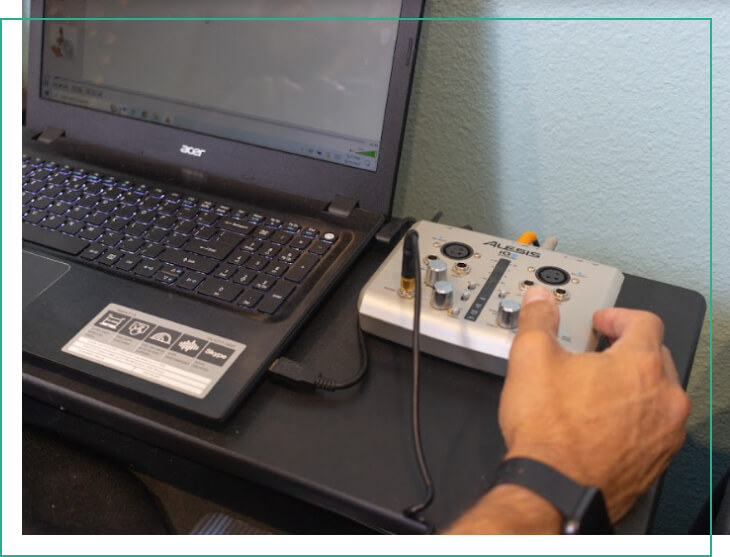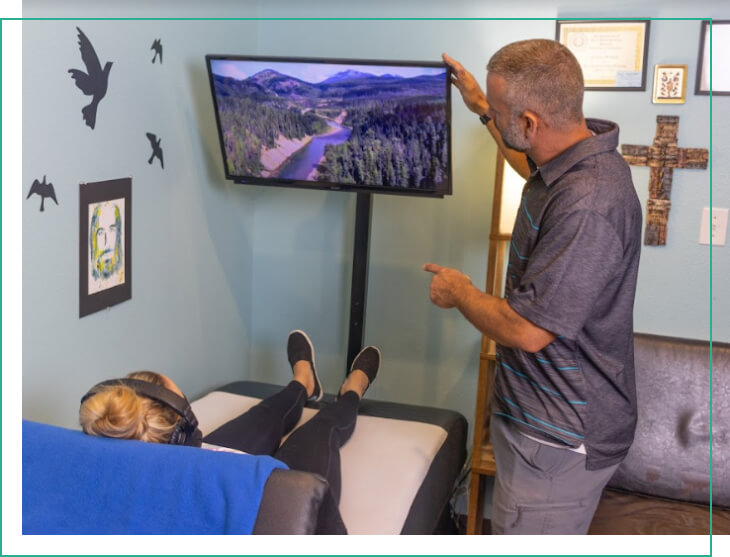Biosound
The Biosound® Therapy System is a vibrational platform constructed with memory foam and integrated with an audio/visual delivery system. It utilizes specifically choreographed music that is synchronized with low-frequency sine tones and binaural beats, helping our clients achieve a deep, meditative state while the healing frequencies help trigger the body’s natural relaxation response.
How it works
Binaural beats induce a theta-level (healing frequency) meditative state
Low-frequency vibrations trigger the body’s natural relaxation response
Coherent heart rhythm patterns synchronize the body’s nervous system
Positive affirmations develop mindfulness and awareness
Benefits of Biosound® Therapy:
- Can be used as a crisis intervention tool to help prevent AMA (against medical advice) early discharges
- Assists clients in detoxing (soothes anxiety, depression, body aches, etc.)
- Induces theta-level brainwave state and helps facilitate a deeper sleep
- Encourages personal growth and development through meditation
- Reduces cravings
- Harmonizes nervous system
- Boosts immune function

The Biosound® Therapy System
Despite the term “biofeedback” not being coined until 1969, the practice — along with self-regulation — has a history that goes back about 5,000 years to the beginnings of meditation and yoga techniques. Yogis have been consciously controlling their autonomic nervous system for thousands of years; in the Western world, the act of self-regulation wasn’t widely accepted until at least the late 1950s. The history of biofeedback began with the research of Edmund Jacobson, who developed the progressive relaxation technique in the 1930s, and Johann Schultz, who developed autogenic/self-driven training. Both of these techniques are considered self-regulatory, and they both served as the basis for research and discovery of biofeedback. Biofeedback finally emerged in the 1960s when several scientific, philosophical, and social movements converged.
Music therapy, a major component of biofeedback, began in the late 18th century, but using music as a healing medium dates back to ancient times. In the United States, music therapy became popular during both WWI and WWII when Veterans Affairs hospitals used music as a form of intervention to address traumatic war injuries. Veterans would both actively and passively engage in music-based activities that focused on relieving pain, and doctors and nurses witnessed the calming effects that music had on the soldiers’ psychological, physiological, cognitive, and emotional states. Since then, colleges and universities around the nation have developed programs to train musicians how to use music for therapeutic purposes.

Researchers speculate that meditation was discovered by primitive hunter-gatherer societies as they stared at the flames of their fires. Over thousands of years, meditation evolved into a structured practice when Buddha, one of history’s main proponents of meditation, made his mark around 500 B.C. His teachings spread quickly across Asia, and various countries and cultures adopted different forms of what meditation meant to them. Today, Buddhist- and Hindu-based meditation practices are the most popular. In the West, meditation didn’t take hold until thousands of years after it made its way over from the East — around the mid-20th century. In the 1960s and 1970s, researchers began testing the effects of meditation, curious to learn its multitude of psychological, physiological, mental, and emotional benefits.
Source: biosoundhealing.com




